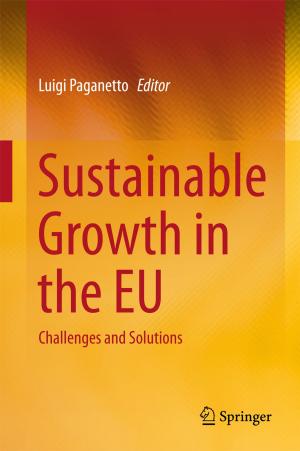The Radish Genome
Nonfiction, Science & Nature, Science, Biological Sciences, Botany, Technology, Agriculture & Animal Husbandry| Author: | ISBN: | 9783319592534 | |
| Publisher: | Springer International Publishing | Publication: | October 4, 2017 |
| Imprint: | Springer | Language: | English |
| Author: | |
| ISBN: | 9783319592534 |
| Publisher: | Springer International Publishing |
| Publication: | October 4, 2017 |
| Imprint: | Springer |
| Language: | English |
This book summarizes the latest information and the status quo of radish genome studies to stimulate innovations and improvements in breeding techniques and to promote further advances in the field.
Radish (Raphanus sativus) is a member of the Brassicaceae family and is cultivated worldwide. Its varieties have been diversified in terms of size, shape, and the color of their roots and bio-components. Thanks to the development of high-throughput molecular techniques using next generation sequencers, complete genomes of cultivated and wild radish plants have been sequenced and published with annotations of predicted genes and single nucleotide polymorphism (SNP) information between radish cultivars and accessions. These, together with the construction of a high-density genetic map of radish and profiling of expression sequences in radish organs, have accelerated genetic studies, such as the identification of genes or loci associated with root development, pungent components, and plant disease resistance. Providing an overview of these advances, this book is a valuable resource for scientists involved in plant genetic research and crop breeding.
This book summarizes the latest information and the status quo of radish genome studies to stimulate innovations and improvements in breeding techniques and to promote further advances in the field.
Radish (Raphanus sativus) is a member of the Brassicaceae family and is cultivated worldwide. Its varieties have been diversified in terms of size, shape, and the color of their roots and bio-components. Thanks to the development of high-throughput molecular techniques using next generation sequencers, complete genomes of cultivated and wild radish plants have been sequenced and published with annotations of predicted genes and single nucleotide polymorphism (SNP) information between radish cultivars and accessions. These, together with the construction of a high-density genetic map of radish and profiling of expression sequences in radish organs, have accelerated genetic studies, such as the identification of genes or loci associated with root development, pungent components, and plant disease resistance. Providing an overview of these advances, this book is a valuable resource for scientists involved in plant genetic research and crop breeding.















